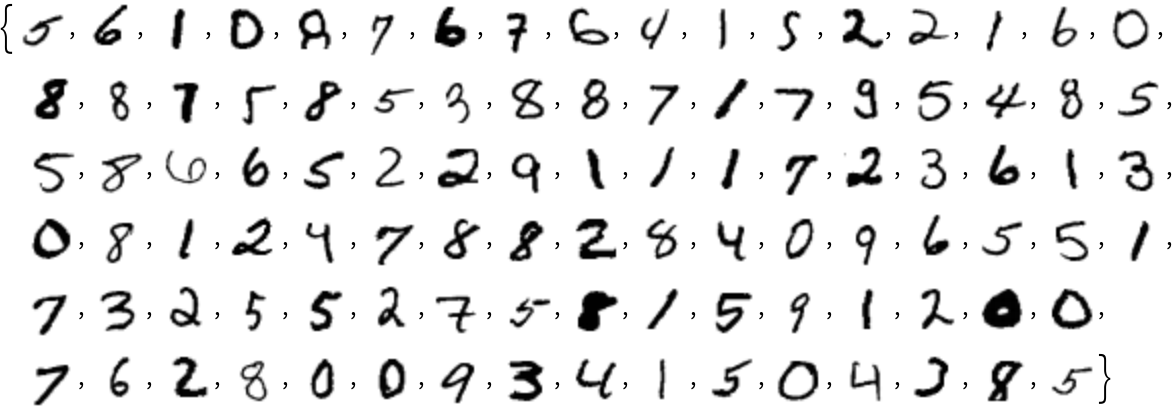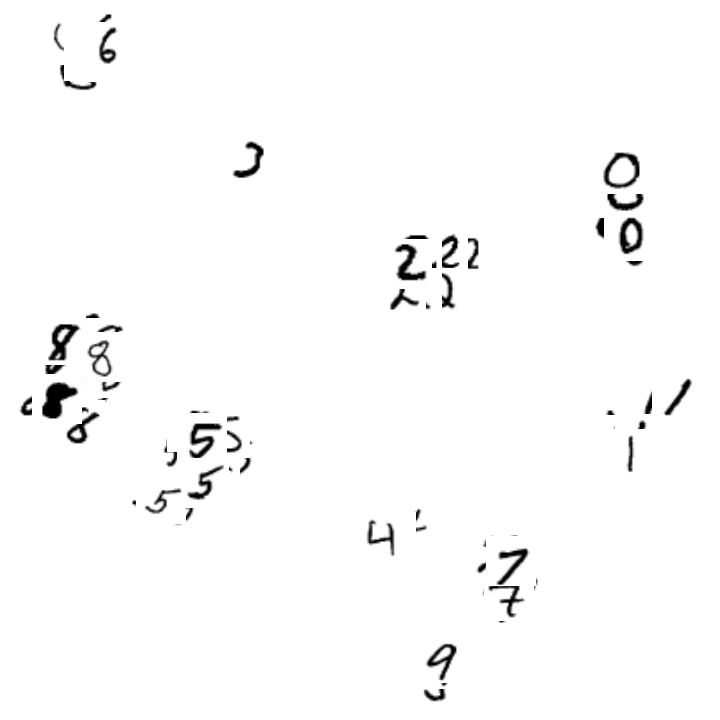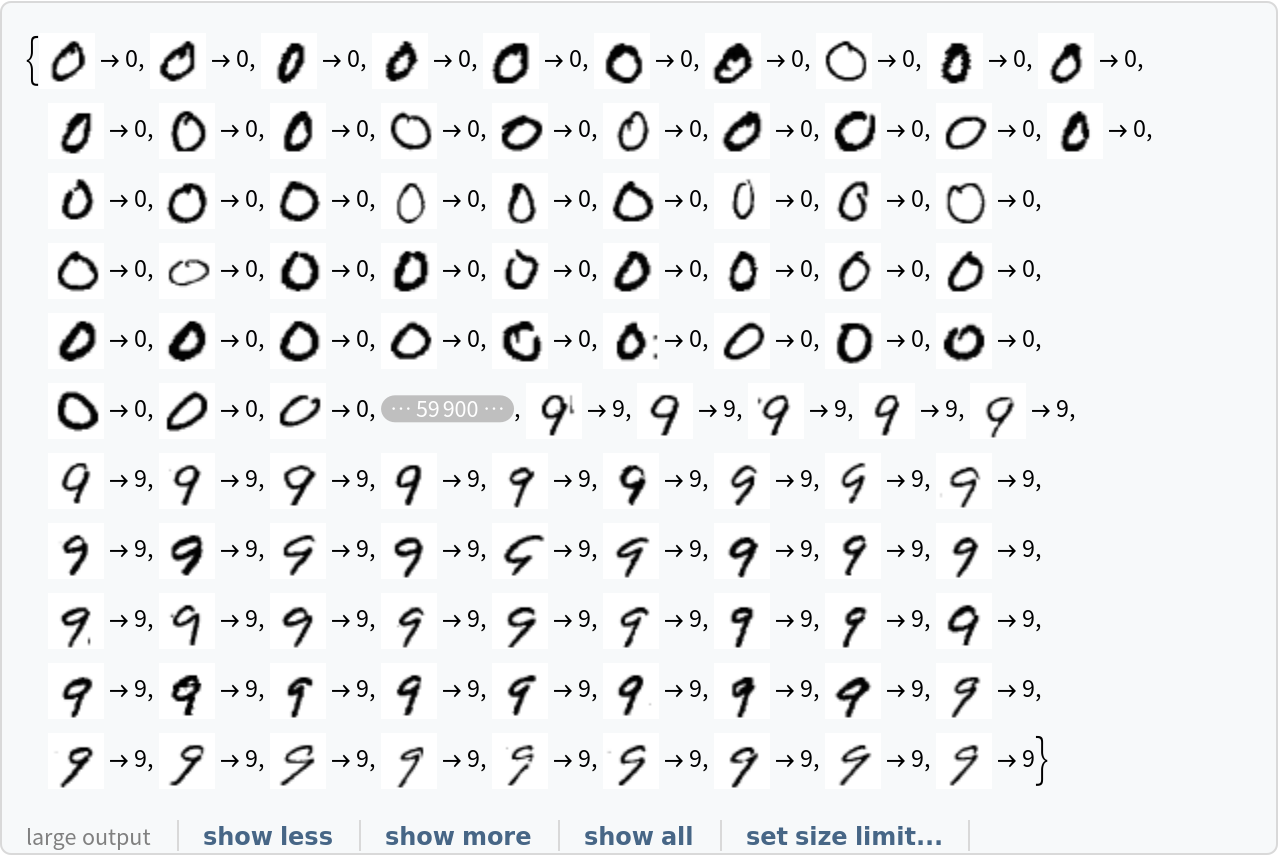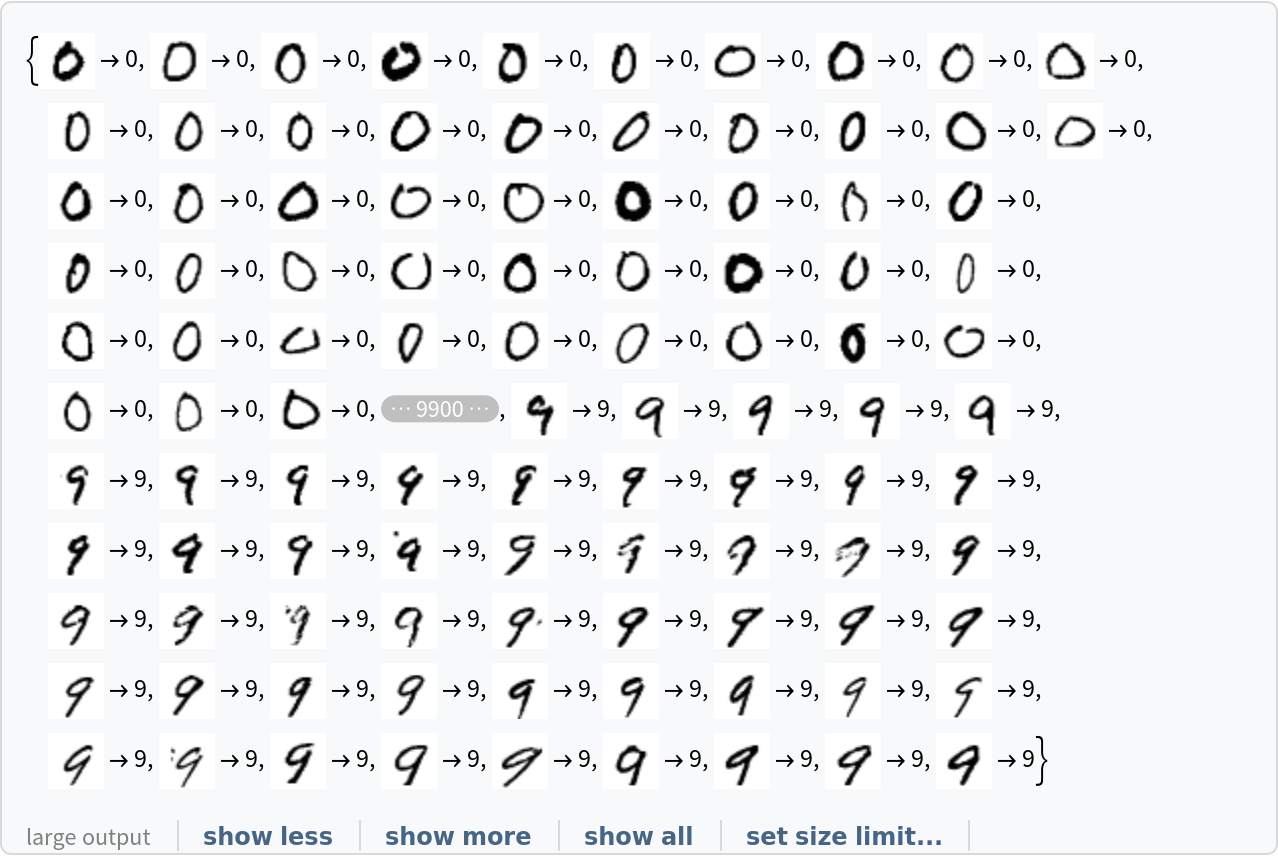Resource retrieval
Retrieve the pre-trained net:
Basic usage
Apply the trained net to a set of inputs:
Give class probabilities for a single input:
Feature extraction
Create a subset of the MNIST dataset:
Remove the last linear layer of the net, which will be used as a feature extractor:
Visualize the features of a subset of the MNIST dataset:
Image generation
Extract the image reconstruction part:
Extract the DigitCaps feature vector for a given digit image:
Reconstruct the image from the feature vector:
Experiment with changing the feature vector. Add a shift along a single coordinate at a time:
Training the uninitialized architecture
Retrieve the uninitialized training architecture:
Retrieve the MNIST dataset:
Use the training dataset provided:
Use the test dataset provided:
Initialize the “W” matrices properly:
Train the net (if a GPU is available, setting TargetDevice -> "GPU" is recommended):
Net information
Inspect the number of parameters of all arrays in the net:
Obtain the total number of parameters:
Obtain the layer type counts:
Display the summary graphic:
Export to MXNet
Export the net into a format that can be opened in MXNet:
Export also creates a net.params file containing parameters:
Get the size of the parameter file:
The size is similar to the byte count of the resource object:
Represent the MXNet net as a graph:




![reconstructor = NetReplacePart[
NetExtract[NetModel["CapsNet Trained on MNIST Data"], "Reconstruct"], "Output" -> NetDecoder["Image"]]](https://www.wolframcloud.com/obj/resourcesystem/images/ebc/ebc8a2f1-bb8b-46de-9c35-2b7083e27916/547551f52ab16df6.png)








![trainingCapsNetInitialized = NetReplacePart[
trainingNet,
{"CapsNet", "PrimaryPredVects", 2, "Array"} -> RandomVariate[UniformDistribution[{-1, 1}*0.005], {1152, 10, 16, 8}]
]](https://www.wolframcloud.com/obj/resourcesystem/images/ebc/ebc8a2f1-bb8b-46de-9c35-2b7083e27916/6423d673094b39c0.png)

![trained = NetTrain[
trainingCapsNetInitialized, trainSet,
ValidationSet -> valSet,
LossFunction -> {"ClassLoss" -> Scaled[1], "RecoLoss" -> Scaled[0.392]},
MaxTrainingRounds -> 50,
TargetDevice -> "CPU"
]](https://www.wolframcloud.com/obj/resourcesystem/images/ebc/ebc8a2f1-bb8b-46de-9c35-2b7083e27916/009376e9d11215a1.png)




